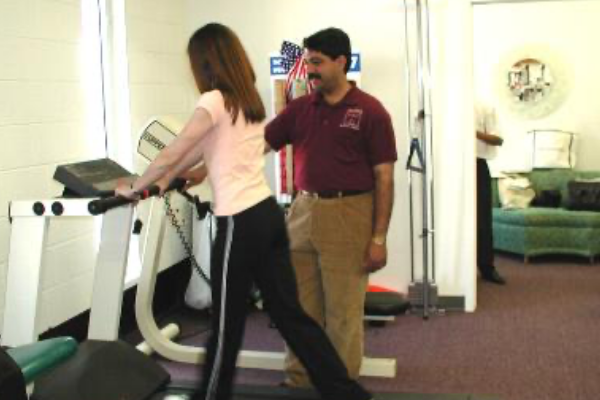Falls are one of the most serious health risks for older adults. More than one third of adults 65 and older fall each year in the United States. Falls are not only the leading cause of injury-related deaths in this population, but they are also a significant cause of disability. In fact, falls cause ten percent of all emergency department visits and more than half of injury-related hospitalizations.
In many cases, falls are caused by a loss of balance or the inability to maintain the body’s center of gravity (COG) over its base of support (BOS). There are two types of balance:
- Static balance is the ability to control postural sway during quiet standing.
- Dynamic balance is the ability to react to changes in balance and to anticipate changes as the body moves. This includes maintaining balance while walking and stepping over or around objects.
The ability to balance depends in large part on sensory, muscular and motor systems:
The visual system is a major contributor to balance, providing information about the environment, the location of the person and the direction and speed of the person’s movement in the environment. Visual acuity, depth perception, peripheral field and sensitivity to low spatial frequencies decrease with age.
The vestibular system, located in the ears, provides information about movement of the head, independent of visual cues. As the head moves, fluid in the canals triggers receptors and information is sent to the brain where it provides input about head orientation. At approximately age 40, vestibular neurons start to decrease in number and size, resulting in various impairments including dizziness.
The somatosensory system provides information about the body’s position and contact from the skin through pressure, vibration and tactile sensors, as well as joint and muscle proprioceptors. Skin sensitivity is reduced with increasing age. Lack of input from tactile, pressure and vibration receptors makes it difficult to stand or walk and detect changes in heel-to-toe body weight shifts, which are important in maintaining balance.
In addition to the three sensory systems, muscle strength plays a role in balance and mobility. Our licensed physical therapists are experts that can assist with the sensory, muscular and vestibular systems, and can customize a program for you. Call now to find out more and how to feel more safe and secure in your home or outside without the fear of falling.



